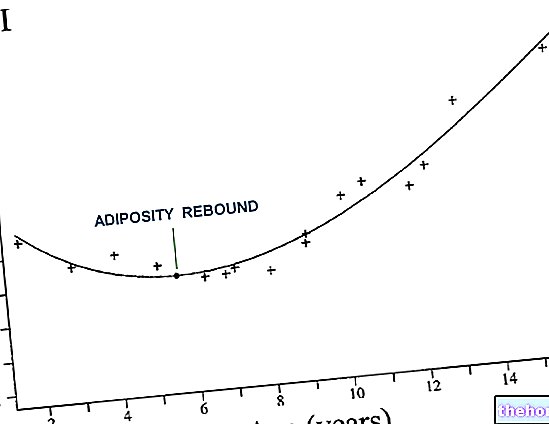Edited by Doctor Davide Cacciola
Drawing up a training program is certainly not an easy thing if you think about the fact that each person is unique and different from the others.

In light of these considerations, every training program should include an initial assessment of body composition, such as to provide detailed information on the fitness level and nutritional status of the person being trained.
In the case of weight loss, if we think of the body as a simplified model consisting of lean mass and fat mass, it is good to be sure that the weight loss occurs in the fat part of our body and not in the lean. This simple example makes us understand how important body composition analysis is.
For this purpose, bioimpedance analysis (BIA) is undoubtedly one of the most reliable and certainly the least invasive methods for assessing body composition, since it is based on a "three-compartment" model.
The three-compartment model to which it refers is composed of:
- Fat Mass;
- Cell Mass;
- Extracellular mass.
BIA is based on the principle that biological tissues behave as conductors, semiconductors or insulators. The intra and extracellular electrolyte solutions of lean tissues are excellent conductors, while bone and fat are insulators, and are not crossed by currents.
The body responds like an electric circuit whenever it is crossed by electric currents. When a current is infused into the body, it passes through it more easily if it contains many bodily fluids, while when it encounters the cell mass it encounters more resistance. The cells also function as capacitors for which they produce a capacitance. frequency applied to a tissue passes mainly through extracellular fluids because, at low frequencies, the impedance of cell membranes is very high (therefore low frequency measurements provide information on extracellular water). With higher frequencies the current passes through all fluids, extra and intracellular (the higher frequencies provide information on intracellular water).
As anticipated, fat tissue is a bad conductor, it follows that body impedance almost completely depends on lean mass.
The test execution protocol requires the subject to lie down on his back. At this point the technician will place four electrodes, two on the hand and two on the foot and, by activating the machine, he will measure the resistance and reactance of his body.
Resistance (Rz) represents the ability of all biological structures to oppose the passage of electric current.
Fabrics free of fat, good conductors, thus represent a path of low resistance, therefore ideal for the passage of current. Adipose tissues, bad conductors, on the other hand, represent a very resistive electrical pathway.
From this it can be deduced that a very fat subject with little total water represents a body with a high resistance in comparison to a muscular and thin subject.
Reactance (Xc), also known as capacitive resistance, is the force that opposes the passage of an electric current due to a capacitance, i.e. a capacitor. By definition the capacitor, this consists of two or more conductive plates separated from them by a layer of non-conductive or insulating material which serves to store electrical charges. In the human body, the cell mass behaves like a capacitor consisting of a membrane of non-conductive lipid material interposed between two layers of conductive protein molecules. Biologically, the cell membrane functions as a selective permeable barrier that separates the extracellular fluids from the intracellular ones, protects the internal part of the cell, however allowing the passage of some substances towards which it behaves as a permeable material. It maintains the osmotic pressure and favors the establishment of an ionic concentration gradient between the intra and extracellular compartments. Reactance is therefore an indirect measure of intact cell membranes and is representative of the cell mass. Therefore the determination of reactance is fundamental for the determination fat-free tissues.
Using the supplied software, these two values give important parameters that I am going to describe below:
Phase angle (PA): expresses the relationship between Reactance and Resistance, in the human body it expresses the intra and extracellular proportions. The phase angle has been shown to have a strong prognostic value in various chronic pathologies.
Body water (TBW) and hydration: It is the largest part of the human body. If the subject is well hydrated, all other parameters are correct. In addition to determining the amount of water present in our body, the BIA determines its distribution inside and outside the cells: a correct hydration provides a distribution ranging from 38 to 45% in the extracellular spaces and from 55 to 62% in the intracellular space.
Lean mass (FFM): It is the resultant of the sum of the Cell Mass (BCM) - the compartment that contains the tissue inside the cells, rich in potassium, which exchanges oxygen, which oxidizes glucose - with the Extracellular Mass (ECM ), the part that includes extra cellular tissues, therefore plasma, interstitial fluids (extracellular water), trans cellular water (cerebrospinal fluid, joint fluids), tendons, dermis, collagen, elastin and the skeleton.
Fat Mass (FM): Expresses all body fat ranging from essential fat to adipose tissue.
Sodium potassium exchange (Na / K): a very important value for verifying the functionality of cells.
Basal metabolic rate (BMR): s "means the minimum amount of energy (heat) essential for the performance of vital functions, such as blood circulation, respiration, metabolic activity, thermoregulation. From this value it is possible to derive, through equations, the total metabolism Consequently, it is possible to develop training and nutritional programs that are much more precise and targeted.

Applications of bioimpedance analysis for training purposes
In summary, Bioimpedance analysis allows to:
- demonstrate that training and nutrition are really losing adipose tissue, and not other more important tissues;
- evaluate how much fat there is in the body before starting a weight loss program;
- calculate the basal metabolic rate, the percentages of muscle and fat mass, in order to adapt training and nutrition;
- exclude or evaluate the extent of any states of water retention;
- verify if the total water in absolute value and in the intra and extracellular compartments remains stable, indicating a substantial water balance.
Above all, bio-impedancemetry allows us to demonstrate that it is not true that by training more than necessary, more results can be obtained, that the weight trend is not constant and the water can vary a lot on a daily basis (for example, resistance training brings significant changes physiological parameters due to significant sweating), that a weight loss is not synonymous with a decrease in fat (especially when it occurs in a short time), and that following an uncontrolled diet, the water and protein mass first vary, that is the cell mass.
Therefore, any personal trainer should not prescribe training programs and dietary suggestions without knowing his student's body composition.






.jpg)





















